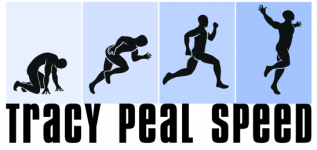LONG, SLOW DISTANCE (LSD) OR SPEED?
Last weekend I had the opportunity to be a part of the 2011 edition of the Wineglass Marathon. Thanks to Sheila Sutton (assistant race director), I was invited to present a couple of lectures during my stay in Corning, NY, and otherwise mingle with the few thousand runners in attendance. There was a two-day (Friday and Saturday) expo held inside the Corning Community YMCA where the runners, vendors and race staff congregated for the usual pre-race/last-minute frenzy.
In between lectures I did some gait analyses (notably with new client Jennifer Brower-McNutt, former 2004 Olympic Trials marathon participant) and answered running-related questions. Jen, and another of my athletes (John Weiner, 49, who ended up finishing 4th overall) were running the 1/2M, so I bundled-up early Sunday morning and headed towards the starting line at Campbell-Savona School. Just prior to the race start, many of the runners lined the school’s hallways (it had started to rain outside), going through the usual stretching and idle chatter routine. Typical of runners, in between calf and quad stretches plus keeping-myself-warm bouncing, was the predictable query posed to anyone within earshot: Am I prepared?
The question was always answered with positive reinforcement (“you’ll be fine!”) – and even more so when the questioner assured the listener that “I got my miles in.” It’s as if those five magical words were the key elixir to surviving any test of human stamina. Having those miles under one’s belt, although seemingly effective, has yet to guarantee any type of success regardless of the distance run. In fact, despite the folklore that “you gotta get that 20-miler in” pre-marathon, how many of you, or people you know, have suffered in that final 10k regardless of their “long run” preparation.
So, if endurance doesn’t give you endurance, what the hell does??? In a leap of faith few are willing to accept, it may sound illogical at first but is truly at the heart of maximizing your running potential: Speed is the foundation of endurance. I first learned this concept from my friend and mentor Dr. Nicholas Romanov (Pose Method) and have witnessed it’s veracity with my own athletes and clients. The adage of “building your endurance through long, slow distance (LSD)” to give you the physiological base to tackle endurance challenges is misleading. Coaches from Arthur Lydiard to Bill Bowerman have stressed, in one form or another, the necessity of optimizing one’s aerobic capacity. Perhaps because of the prevalence of the “jogging” culture, which has led to a boon of recreational runners, or the narrowly-scoped obsession of the scientific community with the physiological effects of prolonged exercise, the concept of running better is all about heart and lung capacity. Unfortunately, all LSD gives you – with a modicum of aerobic benefit – is the ability to move slowly over periods of time while exposing yourself to fatigue, bonking and injury. If our aerobic reservoirs were the linchpin, then why doesn’t someone like Lance Armstrong, whose aerobic engine is legendary, run the fastest marathon times? You may argue that cycling requires different muscles or skills than running, which would point to something else at issue here: technique.
With good technique comes speed, and with speed the potential to endure. Remember, the fundamental requirement is how precisely a runner can interact with the forces available (gravity, ground reaction, muscular stretch-reflex), visible in how effectively he or she can remove their foot from the ground. The kinesthetic awareness that allows the body to move forward hinges on the understanding that there is an exact time-frame for economy – one that is beyond the amount of oxygen consumed per kilogram of bodyweight per minute. The less time you can spend on the ground, the less taxing it is to the muscular system and the less oxygen needed to fuel stressed-out muscles. Humans are built to survive (i.e. slog through marathons), but at great cost. Speed, in the true sense, is that proper combination of skill/effort/awareness/precision you’ll never find while running slowly for slow’s sake (although I want to point out that jogging can be treated as more skill development for improving one’s running technique).
Great distance runners can perform at a sub-5:00 pace, mile after mile. Yet, even Ryan Hall (after Sunday’s 2:08/5th place performance in the Chicago Marathon), commented that he needed to improve his “turnover” and drop his 1/2 marathon time to solidify his Trials and Olympic chances. The idea of strengthening one’s ability to accelerate in shorter intervals succeeds on many levels, physically and emotionally.
The belief that speed cannot be trained year-round is a falsehood. Much research has proven the positive cardiovascular results from repeated interval training. The blueprint is the knowledge of what intervals will bring out your best? How many? How often? With proper interval work and ample recovery, the lessons learned during speed training pay dividends for elite and recreational runners alike. Which leads us to the ultimate question: how fast can you be?







